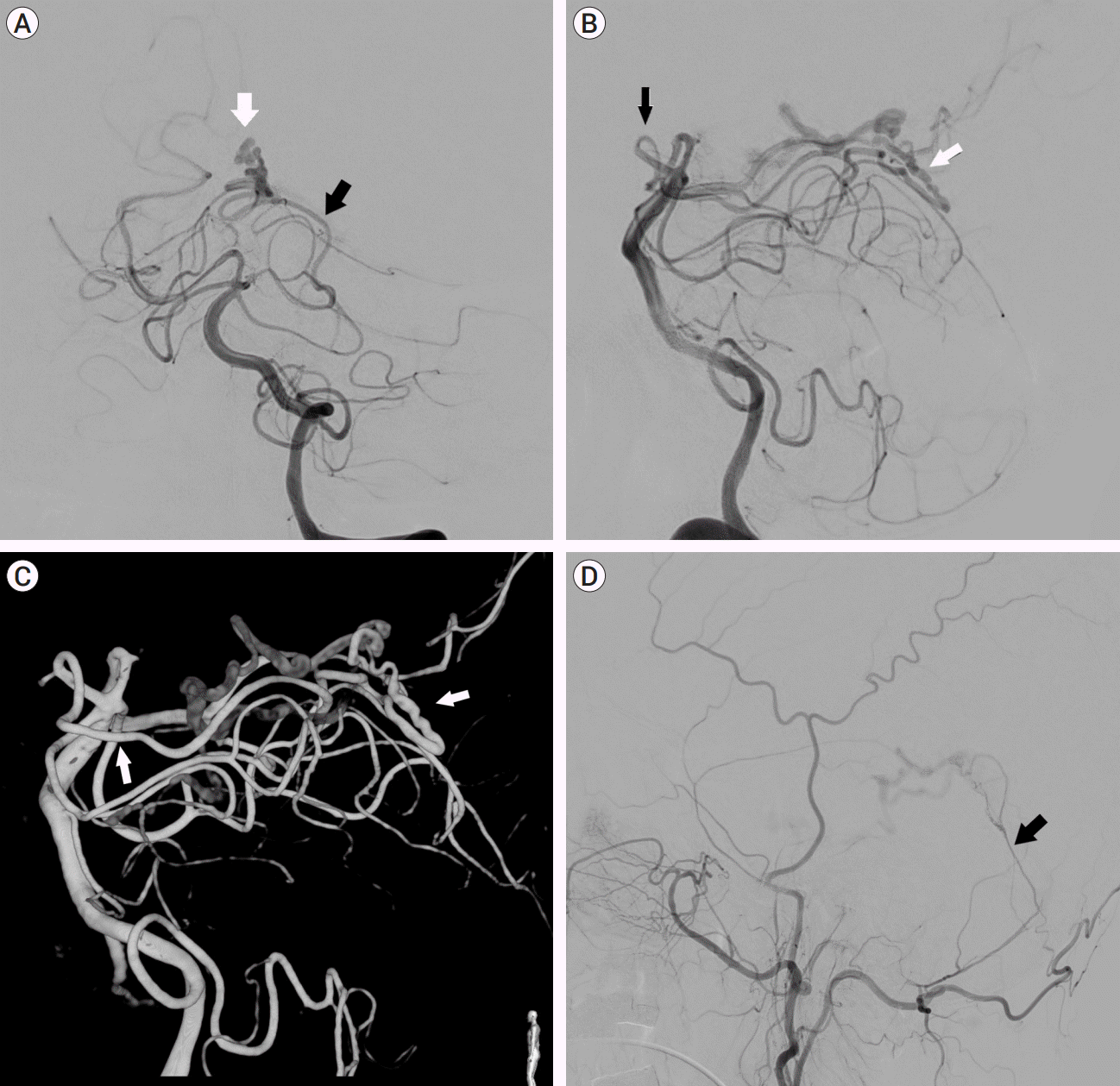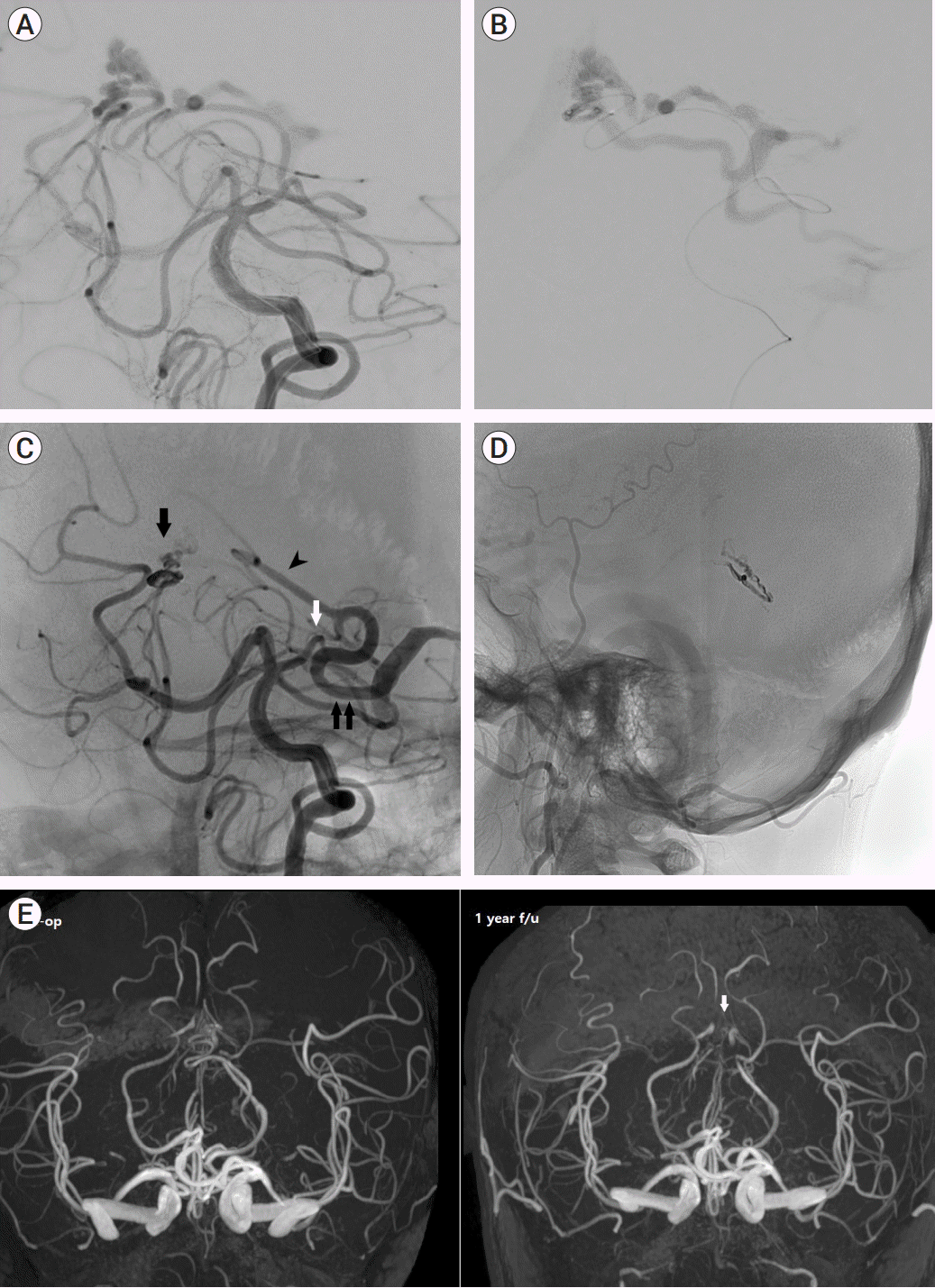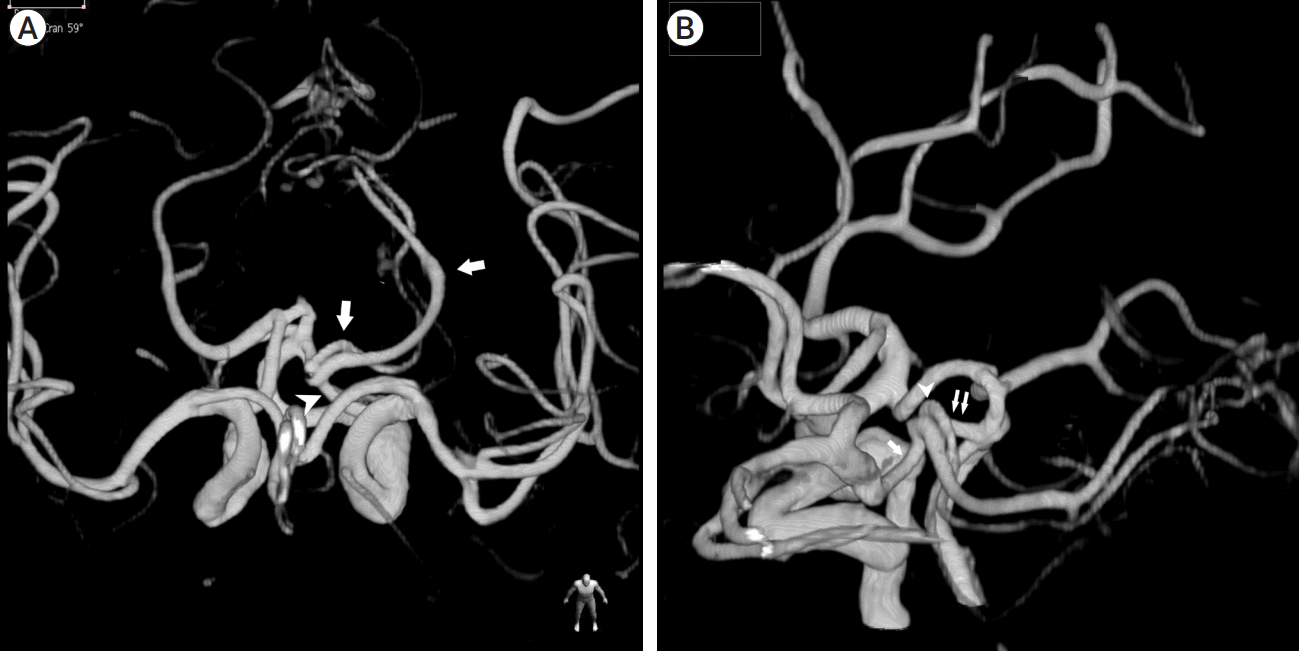1. Bhatia KD, Kortman H, Walchli T, Radovanovic I, Pereira VM, Krings T. Artery of Davidoff and Schechter supply in dural arteriovenous fistulas. AJNR Am J Neuroradiol. 2020; Feb. 41(2):300–4.

2. Borden JA, Wu JK, Shucart WA. A proposed classification for spinal and cranial dural arteriovenous fistulous malformations and implications for treatment. J Neurosurg. 1995; Feb. 82(2):166–79.

3. Brinjikji W, Cloft HJ, Lanzino G. Clinical, angiographic, and treatment characteristics of cranial dural arteriovenous fistulas with pial arterial supply. J Neurointerv Surg. 2021; Apr. 13(4):331–5.

4. Byrne JV, Garcia M. Tentorial dural fistulas: endovascular management and description of the medial dural-tentorial branch of the superior cerebellar artery. AJNR Am J Neuroradiol. 2013; Sep. 34(9):1798–804.

5. Gioppo A, Farago G, Caldiera V, Caputi L, Cusin A, Ciceri E. Medial tentorial dural arteriovenous fistula embolization: single experience with embolic liquid polymer SQUID and review of the literature. World Neurosurg. 2017; Nov. 107:1050.

6. Griessenauer CJ, Loukas M, Scott JA, Tubbs RS, Cohen-Gadol AA. The artery of Davidoff and Schechter: an anatomical study with neurosurgical case correlates. Br J Neurosurg. 2013; Dec. 27(6):815–8.

7. Hart JL, Davagnanam I, Chandrashekar HS, Brew S. Angiography and selective microcatheter embolization of a falcine meningioma supplied by the artery of Davidoff and Schechter. Case report. J Neurosurg. 2011; Mar. 114(3):710–3.
8. Islak C, Bagcilar O, Nacar Dogan S, Korkmazer B, Arslan S, Kizilkilic O, et al. Endovascular management of anterior falcotentorial dural arteriovenous fistulas: importance of functionality of deep venous system and existence of accompanying choroidal arteriovenous malformation. J Neurointerv Surg. 2021; Jul. neurintsurg-2021-017730.

9. Lawton MT, Sanchez-Mejia RO, Pham D, Tan J, Halbach VV. Tentorial dural arteriovenous fistulae: operative strategies and microsurgical results for six types. Neurosurgery. 2008; Mar. 62(3 Suppl 1):110–24. discussion 124-5.
10. Martins C, Yasuda A, Campero A, Ulm AJ, Tanriover N, Rhoton A Jr. Microsurgical anatomy of the dural arteries. Neurosurgery. 2005; Apr. 56(2 Suppl):211–51. discussion 211-51.

11. Puri AS. Dural arteriovenous fistula supplied by the artery of Davidoff and Schechter. Radiol Case Rep. 2015; Nov. 5(2):375.

12. Roman NIS, Rodriguez P, Nasser H, Cox M, Ramchand P, Choudhri O, et al. Artery of Davidoff and Schechter: A large angiographic case series of dural AV fistulas. Neurohospitalist. 2022; Jan. 12(1):155–61.

13. Sato K, Matsumoto Y, Endo H, Tominaga T. A hemorrhagic complication after Onyx embolization of a tentorial dural arteriovenous fistula: A caution about subdural extension with pial arterial supply. Interv Neuroradiol. 2017; Jun. 23(3):307–12.

14. Wollschlaeger PB, Wollschlaeger G. An infratentorial meningeal artery. Radiologe. 1965; Nov. 5(11):451–2.
15. Wu Q, Zhang XS, Wang HD, Zhang QR, Wen LL, Hang CH, et al. Onyx embolization for tentorial dural arteriovenous fistula with pial arterial supply: Case series and analysis of complications. World Neurosurg. 2016; Aug. 92:58–64.








 PDF
PDF Citation
Citation Print
Print



 XML Download
XML Download